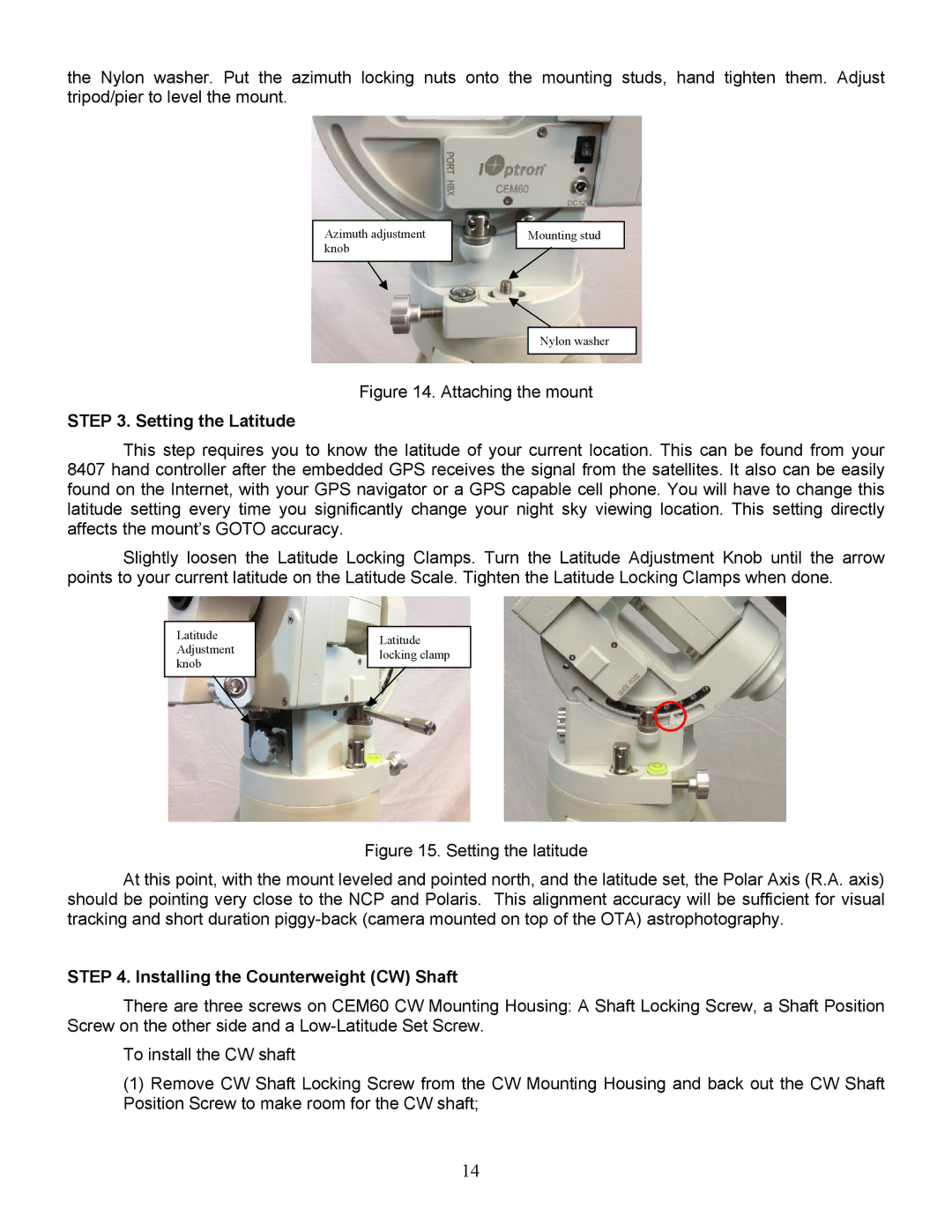
the Nylon washer. Put the azimuth locking nuts onto the mounting studs, hand tighten them. Adjust tripod/pier to level the mount.
Azimuth adjustment knob
Mounting stud
Nylon washer
Figure 14. Attaching the mount
STEP 3. Setting the Latitude
This step requires you to know the latitude of your current location. This can be found from your 8407 hand controller after the embedded GPS receives the signal from the satellites. It also can be easily found on the Internet, with your GPS navigator or a GPS capable cell phone. You will have to change this latitude setting every time you significantly change your night sky viewing location. This setting directly affects the mount’s GOTO accuracy.
Slightly loosen the Latitude Locking Clamps. Turn the Latitude Adjustment Knob until the arrow points to your current latitude on the Latitude Scale. Tighten the Latitude Locking Clamps when done.
Latitude Adjustment knob
Latitude locking clamp
Figure 15. Setting the latitude
At this point, with the mount leveled and pointed north, and the latitude set, the Polar Axis (R.A. axis) should be pointing very close to the NCP and Polaris. This alignment accuracy will be sufficient for visual tracking and short duration piggy-back (camera mounted on top of the OTA) astrophotography.
STEP 4. Installing the Counterweight (CW) Shaft
There are three screws on CEM60 CW Mounting Housing: A Shaft Locking Screw, a Shaft Position Screw on the other side and a
To install the CW shaft
(1)Remove CW Shaft Locking Screw from the CW Mounting Housing and back out the CW Shaft Position Screw to make room for the CW shaft;
14
